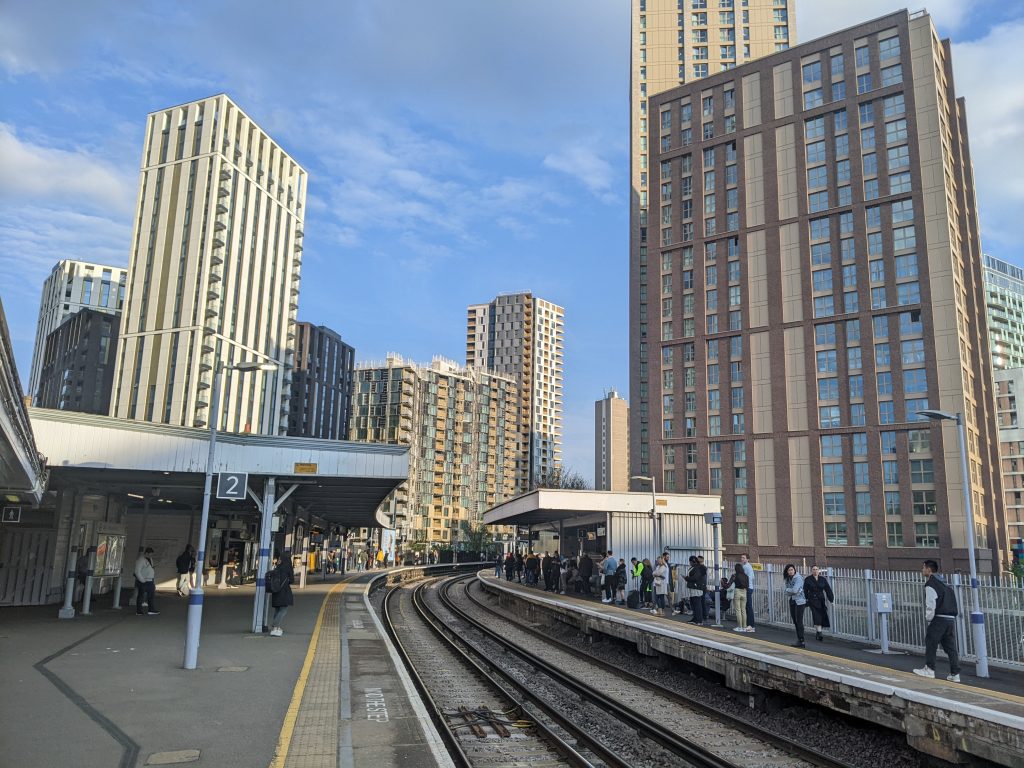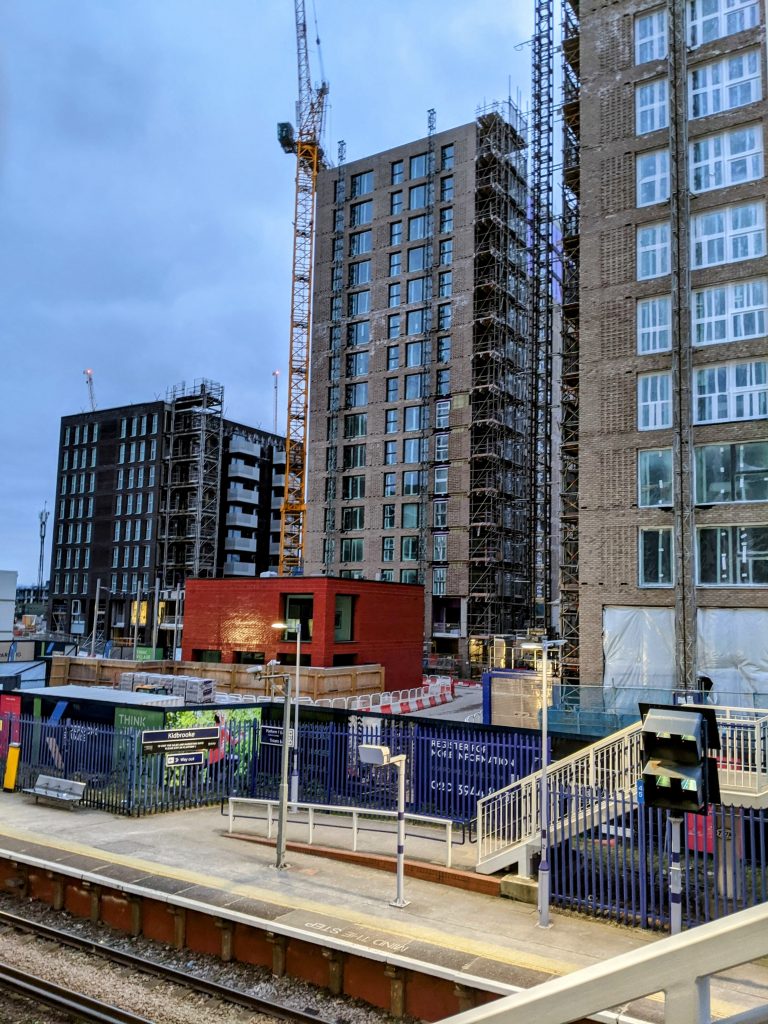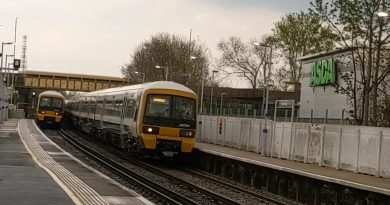Southeastern’s May timetable to start – yet many problems remain
Southeastern’s timetable change is set to begin next week on 21st May – though many of the problems recently introduced through government-enforced service cuts remain.
The company claims that some trains will run with additional carriages and more services will use the “City Beam” stock previously used by South Western Railway.
Given no new trains have arrived, the existing stock will be work more extensively. Southeastern are due to see 12 more trains, but long delays in new trains arriving at SWR means they are not transferring yet.

One of the biggest issues in previous rounds of cuts has been the loss of turn-up-and-go frequencies on some metro routes – and this isn’t alleviated in many places.
Turn-up-and-go means a train every 15 minutes – or 20 tops. The idea is people can be confident of arriving at a station and wont be waiting too long and thus more likely to use a service.

The Woolwich line however saw that idea cut last December when Southeastern halved train frequencies. This does not change in the new timetable – and more crucially the spacing of remaining Thameslink and Southeastern services still ensures sizable gaps between trains.
With Thameslink not calling at all stations along the line, the impact was increased. One such station is Woolwich Dockyard where hundreds of new homes are now rising.

Even major interchanges such as Abbey Wood now see waits nearing 30 minutes. The worst it’s had in decades, just as an £18 billion railway line was constructed connecting to it.

It still seems baffling that arriving on the new Elizabeth line can then see a wait of nearly 30 minutes for onward journeys to Kent on a “Metro” route in a major world city. Southeastern still havn’t restored previous HS1 frequencies to Medway either.

Many new homes are completing near Abbey Wood, and even with the advent of the Elizabeth line residents would use Southeastern to reach areas such as Greenwich or London Bridge, but there seems minimal effort to capture that customer base.

The loop line will still run from the Bexleyheath line to Abbey Wood and from the Sidcup line as before.
Trains along the Sidcup line gain just one extra morning service (the 7:03 from Crayford) and one evening train (17.43 from Charing Cross).
Elsewhere the Bexleyheath line gains back one of the two Charing Cross trains per hour it lost in December. That hourly service still leaves substantial gaps.

These increased intervals coincide with a rising population and substantial housebuilding. For the Bexleyheath line see Kidbrooke and Lewisham.

Kidbrooke continues to see 22-minute daytime service gaps despite ever more homes completing. Has it been worse than that for some decades?

For the Woolwich line, well, just about all stations from Deptford in the west to Erith in the east are seeing mass housing growth.

Given severe financial constraints imposed on Southeastern via the Department for Transport (who control the company) and the Treasury, it’s unlikely much will change anytime soon apart from minor tinkling round the edges.
Yet even within those constraints improvements should be made with remaining services. Ensuring even-spacing of services along the Woolwich line would greatly help. Having two trains run closely together then a near 30 minute gap does not drive growth.
The line managed higher frequencies for the past 50 years than it now has, so it doesn’t seem beyond the realm of possibility to improve that issue with Thameslink and Southeastern working together.

Services that sail through stations that will become of increasing importance as homes are built should see trains call in future. Cutting Southeastern services hits stations such as Erith doubly hard as Thameslink do not stop.
Stations such as Albany Park suddenly saw many trains sail through when they had stopped for decades. That should be rectified. It was hard to see what rationale there was there apart from wanting to skip stations for punctuality purposes.
Even the most recent journey count was 510,000 a year post pandemic. Not exactly small fry. So why skip it now?

What remains maddening is that the Elizabeth line and before that London Overground show what can happen with investment. Southeastern Metro could be transformative for the areas of heavy population growth it serves, but hasn’t had a chance for 20 years now with minimal investment.
Of course no one expects billions to be spent, but given some of the highest levels of new housing, shops and leisure in the UK sit among along various Metro lines, the complete disinterest (at best) attitude of those with the purse strings in government simply results in more congestion on the roads.
Many people are driving to Abbey Wood, for example, for the Elizabeth line as connecting Southeastern services are so poor. Congestion and bus delays are the result.

More bus delays ensures more will then attempt to drive.
This all ensures a negative impact upon the wider economy. And the Treasury are behind it.
Running a site alone takes time and a fair bit of money. Adverts are far from enough to cover it and my living costs as a private renter.
You can support me including via Paypal here Another option is via Patreon by clicking here You can also buy me a beer/coffee at Ko-fi here There's also a Facebook page for the site here Many thanks






And more importantly still no Charing Cross trains on the Woolwich line!! The amount of times I see passengers disembarking off a Cannon Street to change for a Charing Cross train, the CS train practically empties out, same with Thameslink trains, meaning Charing Cross is clearly the preferred option!
Don’t get me started on the pointless stops at St. John’s and New Cross which adds time and no one gets on or off, the timetable is an utter shambles, we should get our CX trains back!
It seems to me that this will only improve if TFL takeover the SE Metro services and that won’t happen until the Mayor and HMG come from the same political party.